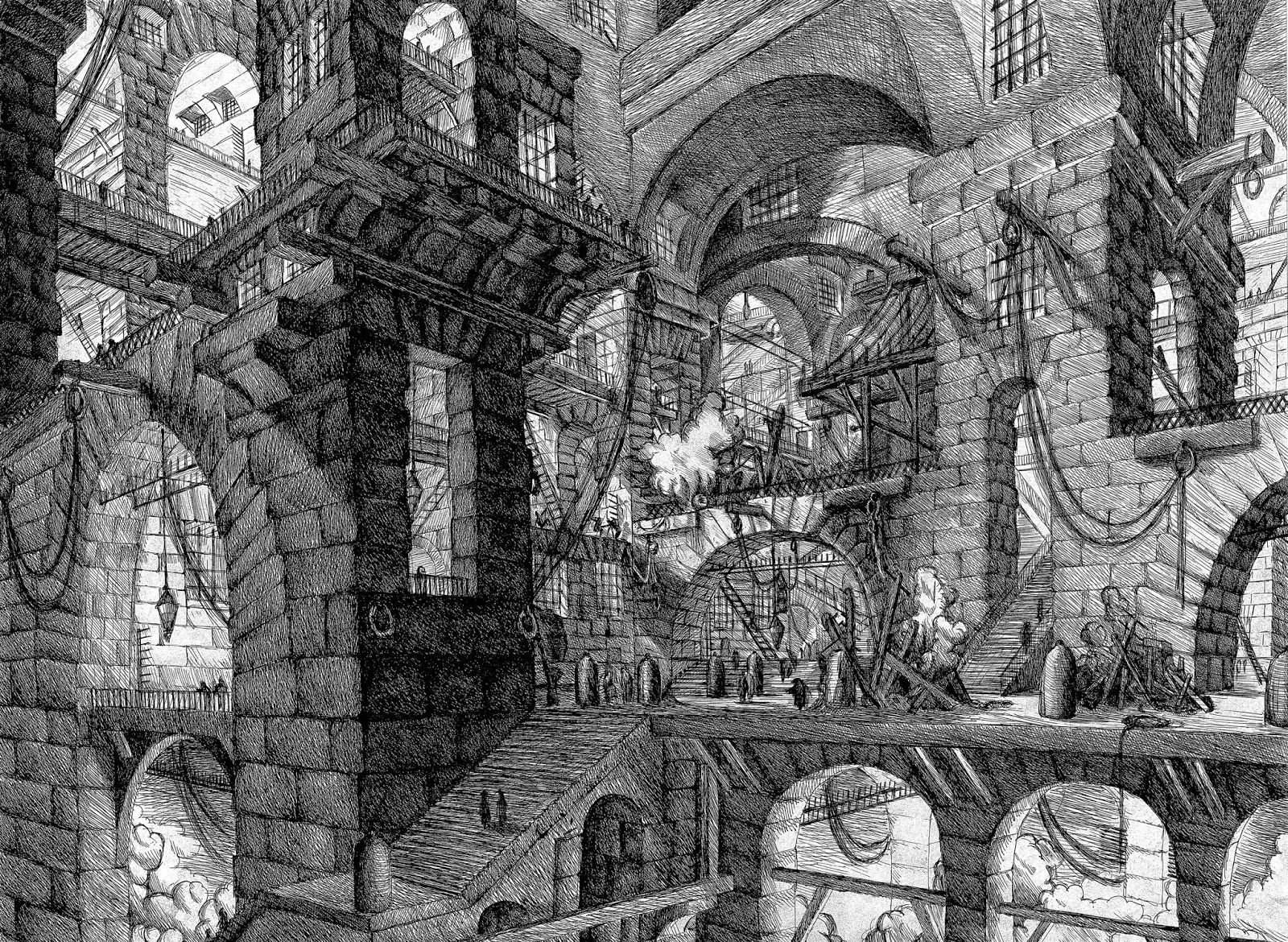

Minute figures climb the infinitely recessing stairs. The etching is a masterpiece in overstatement and displays a nightmarish network of arches, vaults, bridges, ramps, balconies and catwalks. Plate XIV is regarded as one of the most complex of the Carceri, and is the only one to depict a gothic arch. 1716–1795) Etching, engraving, sulphur tint or open bite, burnishing first state of six Robison) 49.4 x 63.8 The Metropolitan Museum of Art, New York Harris Brisbane Dick Fund, 1937, Inv. 1749-50 Designed by Giovanni Battista Piranesi (Italian, 1720–1778) Printed by Giovanni Bouchard (French, ca. Print, The Gothic Arch, from Carceri d’invenzione (Imaginary Prisons), ca. Below is the earlier state of the same plate. This edition was produced via a particularly complicated technique in which the plate was covered with a heavy varnish to protect the first edition etched lines with the varnishing, followed by the drawing and etching processes repeated about 10 to 12 times on each plate. The Cooper Hewitt etching is this second state.
#G. B. PIRANESI PRISON SERIES#
Piranesi returned to the series in 1760, reworking their tonal contrasts and compositions and publishing them as Carceri d’invenzione. This print is both an exploration of the limits of the medium of etching and the technique of printmaking as well as a visual inquiry into architectural experience itself.Ĭarceri were first issued in 1745 under the title Invenzioni Capric di Carceri, with 14 plates, each plate only lightly bitten by acid. This etching is Plate 14 from a series of imaginary prison interiors designed by the Roman architect, designer, and print maker, Giovanni Battista Piranesi (1720- 1778).

Prison design has been a topic of debate and a site for innovation, even in the eighteenth century.


 0 kommentar(er)
0 kommentar(er)
